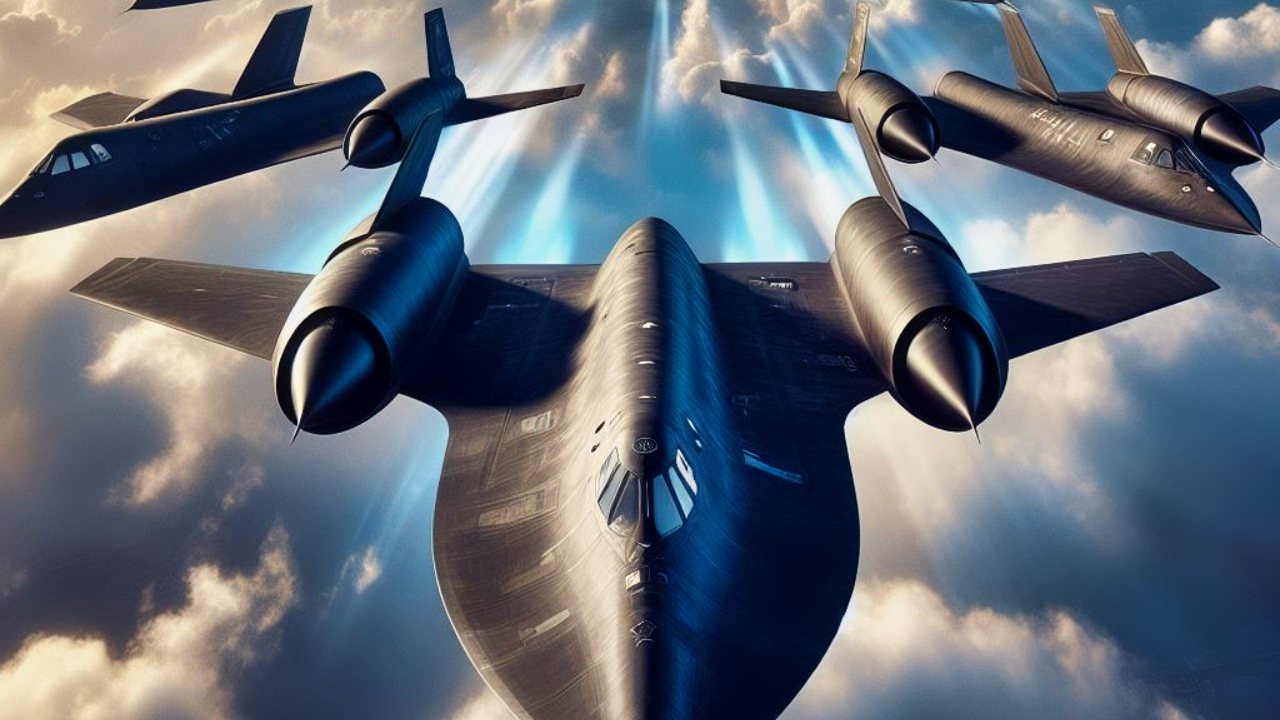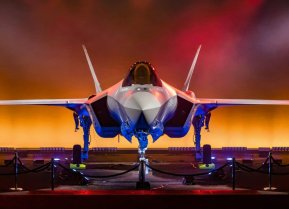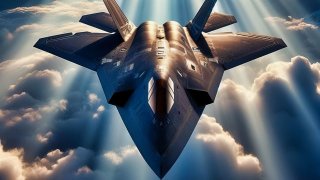SR-91 Aurora: The Mach 5 Air Force Plane That Could Be a Game Changer
Although several reported sightings of the SR-91 Aurora have been documented, this notorious airframe has not been officially disclosed.
SR-91 Explainer: In the 1980s, the moniker “Aurora’ first appeared in a black program spy plane request. Since then, the infamous and perhaps mythical airframe has remained an enigma. Military engineers wanted to construct a hypersonic plane capable of reaching speeds in excess of Mach-5.0. No other plane in existence has been able to fly this fast. Although several reported sightings of the SR-91 Aurora have been documented, this notorious airframe has not been officially disclosed.
Background on the SR-91 Aurora
The Los Angeles Times and Aviation Week & Space Technology first put the SR-91 on the map in the mid-1980s.
Both outlets reported that the name “Aurora” had been inadvertently included in America’s 1995 planned $455 million budget for “black aircraft production.” According to the magazine, the moniker “Project Aurora” actually references an array of unique airframes and not just the SR-91 alone.
The Sun Sentinel also corroborated these numbers, according to Sandboxx News. These references indicated that the Pentagon had a secretive program that would expected to cost even more than the nearly $1 billion dollar B-2 Spirit endeavor.
As detailed in a 1986 procurement document obtained by Aviation Week, funding for the mysterious project had reached roughly $2.7 billion.
The SR-71 Blackbird’s Successor?
In the 1980’s, the legendary SR-71 Blackbird airframe was nearing the end of its service life. As the fastest plane to ever fly the skies anywhere on planet Earth, the Blackbird was certainly a tough act to follow. This airframe could reach speeds in excess of Mach-3.2, powered by a unique Pratt & Whitney J58 engine.

Designed with a minimized radar cross-section, the Blackbird is considered to be an early attempt of stealth design. Since the aviation space was radily evolving around this time, engineers were already working toward the Blackbird’s successor. Many analysts believed that the U.S. had the technological capacity to produce a Mach-5.0 airframe capable of reaching hypersonic speeds.
A detailed overview of Aurora “sightings”
Over the next decade, detailed examinations of a variety of U.S. defense budgets claimed that unaccounted for funds had been channeled into secretive programs. Sightings also began to prop up, all allegeding that the Aurora prototype was already taking flight. In 1989, an engineer asserted that he witnessed a triangular-shaped airframe resembling renderings of the Aurora over the North Sea. However, since this infamous airframe can reportedly fly at speeds five times faster than sound, the likelihood that this individual could have actually spotted it flying is very, very low. The Air Force was flying both the B-2 bomber and the F-1117 Nighthawk around this time, which could have been what was seen flying the skies.

In 2000, an additional Aurora clue emerged. Nic Outterside with the Aberdeen Press and Journal cited “confidential sources” when he claimed that RAF/USAF Machrihanish in Kintyre, Argyll to be a base for the Aurora airframes. Since the base has longer runways, Outterside explained that it would make a suitable runway for high-altitude, experimental aircraft.
Another clue concerning the Aurora surfaced in 2006, when the British Ministry of Defense released a report suggesting that the U.S. Air Force has initiated plans to produce a Mach-4.0-6.0 highly supersonic airframe. Ultimately, though, no “conclusive evidence had emerged to confirm the existence of such a project.” Later, other clues involving the potential existence of the Aurora surfaced. Namely, periodic “sky quakes” were reportedly felt over Los Angeles on various occasions.
In 1993, Bill Sweetman from the well-regarded Jane’s Defense Weekly defense magazine reported that seismologists from the U.S. Geological Survey had been recording tremors near the San Gabriel Valley in Southern California. According to the magazine, these tremors were in keeping with a sonic boom from a high-altitude supersonic aircraft. However, the fast planes heard buzzing over the city more likely came from unclassified airframes from Nevada’s Area 51.
“All I can say is that it’s something that’s traveling through the atmosphere at several times the speed of sound in a generally northeasterly direction,” Jim Mori, a seismologist with the United States Geological Survey at Caltech, told the LA Times in 1992. Sweetman then noted that the nature of the reported sonic bombs were not in keeping with other aircraft known to be flown by the U.S. military. “It’s too fast for any aircraft that we know about,” he added.
One month prior to this incident, the Aviation Week and Space Technology outlet also claimed that reported sightings of an atypical aircraft with diamond-shaped lighting had been spotted flying over northern California alongside two F-117 Nighthawks and a KC-135 refueling tanker. According to the witnesses, the plane turned off its unusual exterior lighting and made a distinct sound similar to “air rushing through a big tube.”
SR-91 Aurora: Fact, Fiction, or Internet Myth?
Despite the litany of claims surrounding the Aurora’s existence, this airframe is yet to be confirmed by U.S. officials. If the mysterious SR-91 does exist, it could top the Blackbird’s speed record.
About the Author: Maya Carlin
Maya Carlin, National Security Writer with The National Interest, is an analyst with the Center for Security Policy and a former Anna Sobol Levy Fellow at IDC Herzliya in Israel. She has by-lines in many publications, including The National Interest, Jerusalem Post, and Times of Israel. You can follow her on Twitter: @MayaCarlin.
All images are Creative Commons.


